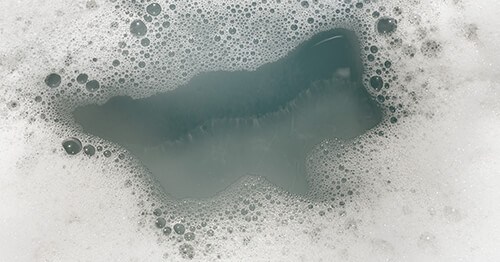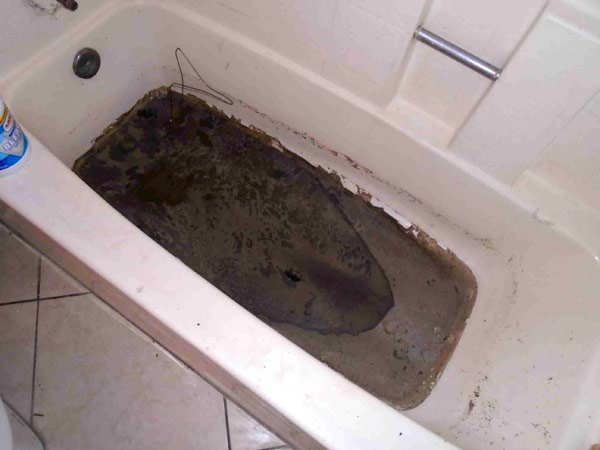Exploring the Causes of Effluent Backflow in the Bathtub
Exploring the Causes of Effluent Backflow in the Bathtub
Blog Article
What're your beliefs about What to Do if Sewage Starts Coming Up Through Your Bathtub?

Sewer backup in the bath tub can be a traumatic and unsanitary trouble for any type of property owner. Not only is it troublesome, yet it likewise poses severe health dangers and suggests underlying concerns with the plumbing system. Understanding why sewage is turning up with the tub is essential for taking ideal action to resolve the trouble successfully.
Intro to the Problem
Typical Reasons for Sewer Backup
Obstructions in the Drain Line
One of one of the most usual sources of sewage backup is a clog in the sewage system line. This can happen due to the buildup of debris, grease, or international objects in the pipelines, stopping correct flow and creating sewer to back up right into your tub.
Tree Origin Breach
Tree origins seeking moisture and nutrients can penetrate sewer lines with little splits or joints. In time, these roots can expand and increase, causing significant damages to the pipelines and leading to sewage back-up concerns.
Recognizing the Issue
When sewage draws back up right into the tub, it's a clear indicator of a problem with the drain system. The wastewater that needs to be moving far from your home is rather discovering its back right into your home, which can bring about significant damages and health hazards.
Potential Causes
Numerous aspects can add to sewage backup in the tub. From clogs in the sewage system line to concerns with the plumbing facilities, recognizing the origin is important for discovering a service.
Aging Infrastructure
Older homes might have dated plumbing systems that are more vulnerable to corrosion, fractures, and degeneration. As pipelines age, they come to be more susceptible to leakages and clogs, increasing the probability of sewage back-up cases.
Heavy Rainfall or Flooding
Throughout durations of heavy rainfall or flooding, the sewer system might end up being overwhelmed with excess water, causing backups and overflows. This can result in sewage supporting right into bathtubs and various other fixtures inside the home.
Indications of Sewage Back-up
Foul Odors
Unpleasant smells emanating from drains or fixtures, specifically in the restroom, might indicate sewer backup concerns. These odors are usually solid and consistent, signaling an issue that requires instant focus.
Slow Draining Fixtures
Tubs, sinks, and commodes that drain pipes slowly or otherwise at all could be experiencing sewer backup. If numerous fixtures are impacted concurrently, it's likely that the concern originates from a common point, such as the main sewer line.
Gurgling Sounds
Strange gurgling or gurgling noises originating from drains when water is running in other places in your house are indicative of air caught in the plumbing system. This air accumulation can arise from sewer back-up and need to be examined without delay.
Wellness Risks Associated with Sewer Back-up
Contamination of Water Supply
Sewer back-up can pollute the water system in your house, posing a major health risk to you and your family members. Direct exposure to infected water can result in stomach issues, skin infections, and other illnesses.
Mold and mildew Growth
Wetness from sewer backup can produce ideal problems for mold and mildew growth in your home. Mold spores can worsen breathing problems and cause allergies in delicate people, making punctual cleanup necessary.
Spread of Disease
Sewer contains damaging microorganisms, infections, and parasites that can cause a series of conditions, consisting of liver disease, cholera, and gastroenteritis. Entering contact with sewer or polluted surfaces places you in jeopardy of infection.
Cleaning Up After Sewer Back-up
Disinfection Procedures
Thoroughly decontaminate and disinfect impacted locations after sewage back-up to get rid of unsafe microorganisms and prevent mold and mildew development. Use proper cleansing items and safety equipment to ensure secure and efficient cleaning.
Reconstruction of Affected Areas
Fix any damage to flooring, walls, or fixtures triggered by sewage backup. Depending upon the degree of the damage, you may require to change carpets, drywall, or other materials to recover your home to its pre-loss problem.
Immediate Actions to Take
Switching Off Water System
In the event of sewage back-up, it's necessary to shut off the water supply to prevent further contamination and damage. Locate the main water shutoff valve in your house and shut it off till the problem can be settled.
Speaking To an Expert Plumber
Managing sewer backup is not a DIY task. Contact an accredited plumber with experience in dealing with sewage-related concerns to evaluate the circumstance and perform essential repair work or cleanups.
Avoiding Contact with Polluted Water
Up until the sewage back-up is settled, prevent contact with polluted water to prevent the spread of bacteria and pathogens. Use protective gear if you should be in the afflicted area and clean your hands completely afterward.
Safety nets
Normal Maintenance of Sewer Lines
Set up regular evaluations and upkeep of your sewer lines to recognize and attend to potential concerns prior to they escalate into significant problems. This can include cleaning out debris, inspecting for tree root invasion, and repairing any kind of broken pipelines.
Installing Backwater Shutoffs
Consider installing bayou shutoffs in your plumbing system to avoid sewage from flowing back right into your home throughout durations of heavy rainfall or flooding. These shutoffs immediately close when water starts backing up, securing your residential property from contamination.
Correct Disposal of House Waste
Stay clear of flushing anything apart from bathroom tissue and human waste down the commode to prevent obstructions and blockages in the sewer line. Dispose of grease, oil, and other house chemicals effectively to lessen the risk of plumbing issues.
Why Is Water Backing Up in My Bathtub When I Flush My Toilet?
What to do about a sewer line clog
First, don’t bother with plunging. No amount of plunging will dislodge the clog in a sewer line. The clog is too far away. Plungers are for clogs in the toilet itself, not the sewer line. Plus, the most likely causes of a sewer clog are:
Tree roots Flushed toys or feminine products Grease buildup Those items don’t move easily. And in the case of tree roots, the roots need to be cut out of the pipe and the pipe will need to be repaired.
You’ll need a closet auger. A closet auger is a type of plumber’s snake with a protective cover to keep from scratching the delicate porcelain toilet. If the clog is further down, you may need to remove the toilet or use one of your cleanouts to get to the clog.
We also recommend doing a video inspection of the drain to ensure that the cause of the clog has been completely removed. Otherwise, you could have the same problem again in a few days or weeks.
https://mspplumbingheatingair.com/blog/why-is-water-backing-up-in-my-bathtub-when-i-flush-my-toilet

Hopefully you enjoyed our section about Water Coming up Bathtub Drain. Thank you so much for taking the time to read through our post. If you please take a moment to share this write-up if you liked it. Bless you for being here. Kindly come by our site back soon.
Book Services
Report this page